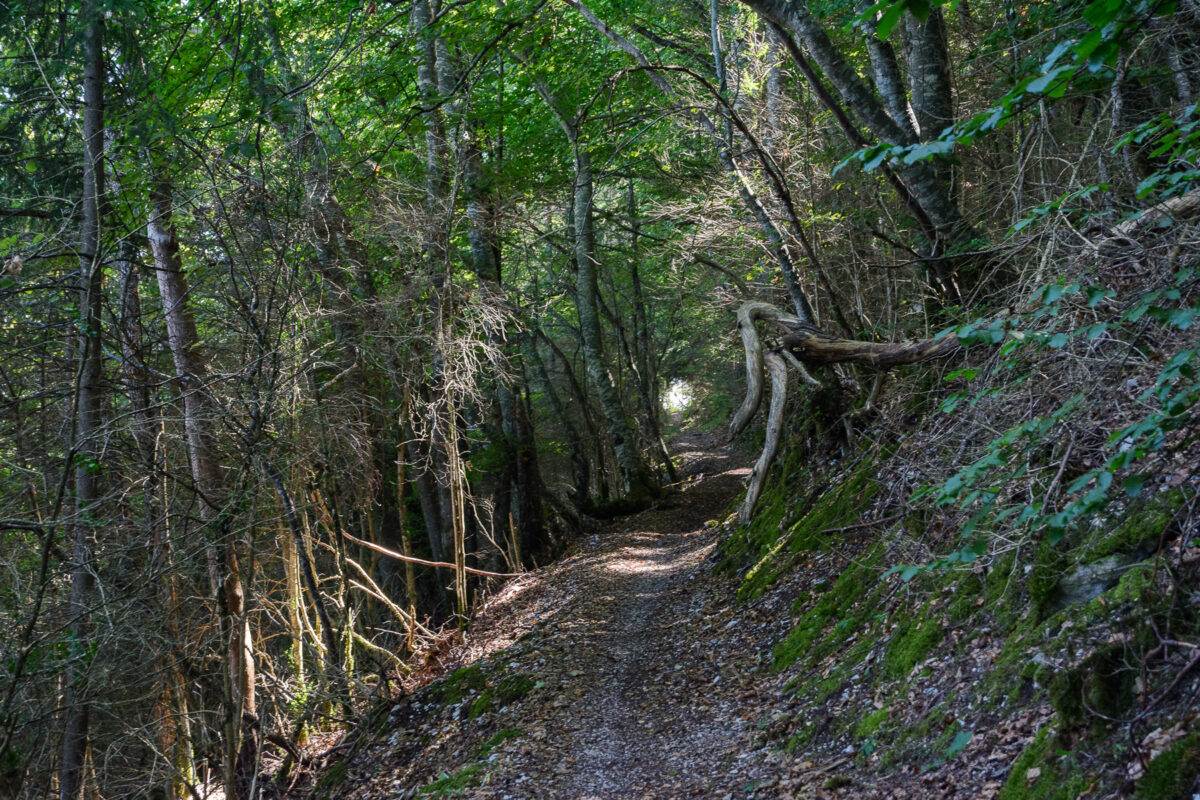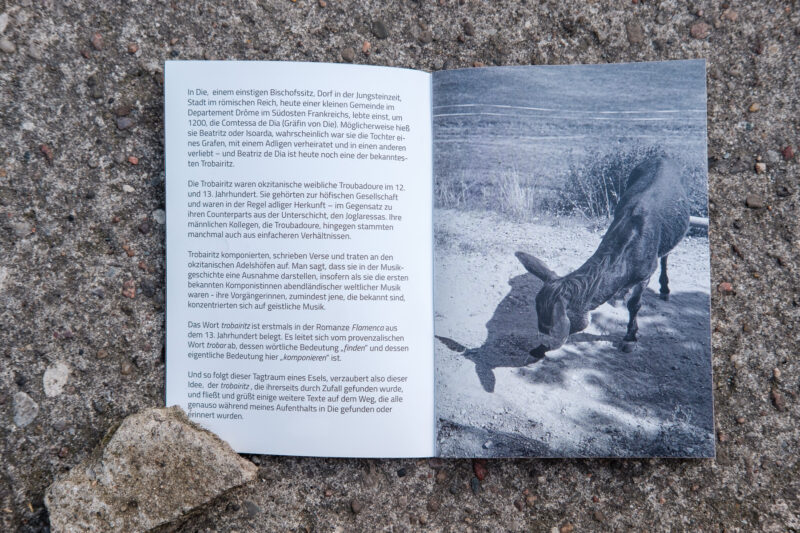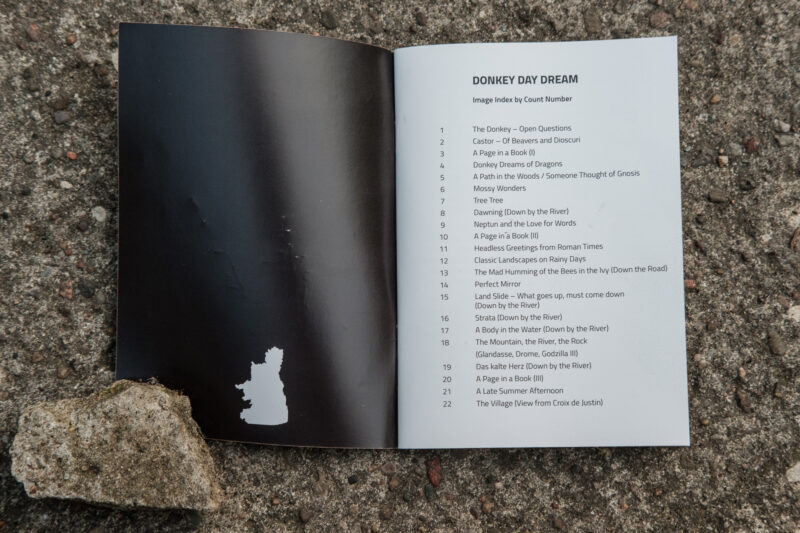Donkey Day Dream

Das Heft/ The Booklet (2022)
published by
Lichtenberg Studios
2021 11. Jahrgang, Heft 77
44 pages, colour, DIN A6, backstitch binding
Language: German, English, French
The booklet was made with material from „But it is September Now“ (a residency in Die)
thanks to Uwe Jonas (ed.), Museum Lichtenberg and Lichtenberg Studios

This booklet is the the story of the Donkey’s Day Dream. Just who is the donkey?
The artist, the author or the donkey who, whilst staying motionless,
was cursing the heat of the midday hour
and had her mind wander with the tale of the Contessa de Dia?

Story
In Die, a former episcopal see, nowadays a commune in the departement of Drôme in southeastern France, once upon a time lived the Comtessa de Dia (Countess of Die) (c. 1175 or c. 1212), possibly named Beatritz or Isoarda, most likely the daughter of a count, married to a nobleman and in love with another. Beatriz de Dia is one of the most well known trobairitz.
The trobairitz were Occitan female troubadours of the 12th and 13th centuries. They composed, wrote verses, and performed for the Occitan noble courts. They are exceptional in musical history as the first known female composers of Western secular music; all earlier known female composers wrote sacred music. As opposed to their lower class counterparts the joglaressas the trobairitz were part of courtly society and although troubadours sometimes came from humble origins the trobairitz were usually nobly born.
The word trobairitz is first attested in the 13th-century romance Flamenca. It comes from the Provençal word trobar, the literal meaning of which is <to find>, and the technical meaning of which is <to compose>.
And so the donkey‘s day dream follows and flows from this idea that itself was found by serendipity, greeting some more texts on the way, all of which were found – or remembered during my stay in Die.



